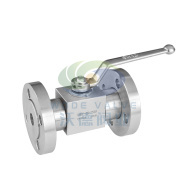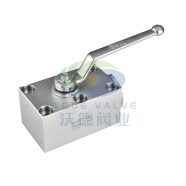News
How Wafer Check Valves Enhance Efficiency and Performance in Industrial Processes
Time:
Feb 05,2025
Introduction to Wafer Check Valves in Industrial Applications
In the fast-paced world of industrial processes, the efficiency and reliability of equipment are paramount. One crucial component that contributes significantly to these aspects is the wafer check valve. These valves are designed to prevent backflow while ensuring a smooth flow of fluids, which is essential in many industrial applications. In this article, we will explore how wafer check valves improve efficiency and performance, focusing on their design, benefits, and applications.
Understanding Wafer Check Valves
Before delving into the benefits of wafer check valves, it's essential to understand their basic structure and functionality. Wafer check valves are unique in that they are designed to be installed between two flanges, making them incredibly space-efficient. Their lightweight design and streamlined profile allow for easy integration into piping systems without taking up much space.
What Are Wafer Check Valves?
Wafer check valves operate automatically, allowing fluid to flow through in one direction while preventing backflow. This mechanism is crucial for maintaining pressure and ensuring the integrity of fluid systems. These valves come in various materials, including stainless steel, cast iron, and plastomers, making them suitable for various applications.
Key Components of Wafer Check Valves
The main components of wafer check valves include:
- **Body:** The main structure that houses the internal components and connects to the piping system.
- **Disc:** A movable part that opens and closes to allow or restrict fluid flow.
- **Spring (optional):** Some wafer check valves use a spring mechanism to assist in the closing action, providing added reliability.
Benefits of Using Wafer Check Valves in Industrial Processes
Wafer check valves offer numerous advantages that make them ideal for enhancing efficiency and performance in industrial settings.
1. Improved Flow Efficiency
One of the most significant benefits of wafer check valves is their ability to optimize flow efficiency. Their design minimizes turbulence and pressure drops, allowing for a smooth and steady flow of fluids. This efficiency can lead to lower energy consumption, which is particularly beneficial in large-scale operations.
2. Space-Saving Design
The compact nature of wafer check valves allows them to be installed in tight spaces where traditional valves might not fit. This feature is especially advantageous in environments with limited space, such as chemical processing plants or water treatment facilities.
3. Reduced Maintenance Costs
Due to their durable construction and reliable performance, wafer check valves require less maintenance compared to other valve types. Their simple design reduces the chances of wear and tear, resulting in lower maintenance costs and less downtime for industrial processes.
4. Enhanced Reliability and Safety
Wafer check valves are designed to operate under varying pressure conditions, ensuring that they perform reliably even in challenging environments. This reliability translates to increased safety, as the chances of backflow and system failures are significantly reduced.
5. Versatility in Applications
These valves are versatile and can be used in a wide range of applications, including wastewater treatment, oil and gas, HVAC systems, and chemical processing. Their ability to handle different fluids, from water to corrosive chemicals, makes them a valuable component in multiple industries.
Applications of Wafer Check Valves
Wafer check valves are utilized across various industries due to their numerous advantages. Here are some key applications:
1. Water and Wastewater Management
In water treatment facilities, wafer check valves play a crucial role in preventing backflow, ensuring that treated water flows in the desired direction without contamination from untreated sources.
2. Chemical Processing
Wafer check valves are essential in chemical processing plants, where maintaining fluid integrity and preventing backflow is critical. Their robust design allows them to handle aggressive chemicals safely.
3. Oil and Gas Industry
In the oil and gas sector, these valves are crucial for pipeline systems, preventing backflow and ensuring the safe transport of hydrocarbons. Their reliability in high-pressure environments makes them indispensable.
4. HVAC Systems
In heating, ventilation, and air conditioning systems, wafer check valves help regulate the flow of refrigerants, allowing for efficient operation and energy savings.
5. Pharmaceutical Manufacturing
In the pharmaceutical industry, maintaining the purity of fluids is paramount. Wafer check valves help prevent contamination by ensuring that fluids flow in a single direction only.
Choosing the Right Wafer Check Valve
Selecting the appropriate wafer check valve for your application involves considering several factors:
1. Material Selection
The material of the valve should be compatible with the fluid being transported. Stainless steel is often chosen for its corrosion resistance, while plastic valves may be suitable for less aggressive fluids.
2. Size and Pressure Rating
Ensure the valve size matches the piping dimensions and that it can handle the required pressure levels. This consideration is crucial for maintaining system integrity and preventing failures.
3. Spring vs. Non-Spring Design
Decide whether a spring-assisted design is necessary for your application. Spring-loaded valves can provide quicker closing actions, which may be needed in high-flow situations.
Installation and Maintenance of Wafer Check Valves
Proper installation and maintenance are vital for ensuring the longevity and effectiveness of wafer check valves.
1. Installation Guidelines
- **Positioning:** Wafer check valves should be installed in the correct orientation, with the disc facing the direction of flow.
- **Flange Alignment:** Ensure that the flanges are properly aligned to avoid stress on the valve.
- **Sealing:** Use appropriate gaskets to prevent leaks at the connection points.
2. Maintenance Practices
- **Regular Inspection:** Periodically inspect the valves for signs of wear, corrosion, or leaks.
- **Cleaning:** Keep the valves clean to prevent debris buildup that could affect performance.
- **Testing:** Conduct functional tests to ensure that the valves are operating correctly and efficiently.
FAQs About Wafer Check Valves
1. What is the main function of a wafer check valve?
The primary function of a wafer check valve is to prevent backflow in piping systems, ensuring that fluids flow in one direction only.
2. How do I know if I need a spring-loaded wafer check valve?
If your application involves high flow rates or rapid changes in pressure, a spring-loaded valve may be necessary for quicker closing actions.
3. Can wafer check valves be used in high-temperature applications?
Yes, but it is essential to choose a valve made from materials that can withstand high temperatures without degrading.
4. Are wafer check valves suitable for corrosive fluids?
Certain materials, such as stainless steel or specialized plastics, make wafer check valves suitable for corrosive fluids. Always verify material compatibility.
5. What are the signs of a failing wafer check valve?
Signs of failure may include leaks, unusual noises during operation, or visible corrosion. Regular maintenance can help identify issues before they lead to failure.
Conclusion
In summary, wafer check valves are invaluable components in various industrial processes, significantly enhancing efficiency and performance. Their compact design, reliability, and versatility make them suitable for a wide range of applications. By understanding their benefits, applications, and maintenance requirements, industries can make informed decisions that lead to improved operational efficiency and safety. Investing in high-quality wafer check valves can yield significant long-term benefits, optimizing processes and maintaining system integrity.
RELATED NEWS




